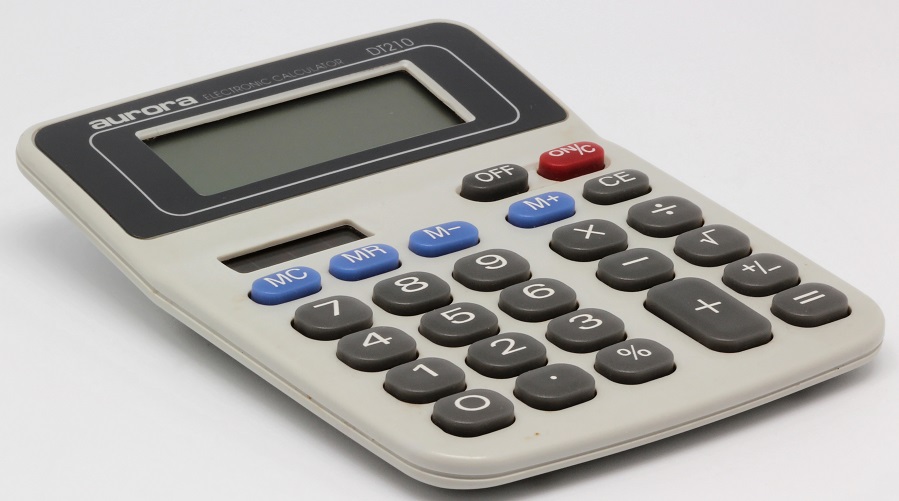Beginners Guide to EV in Poker
Ever wondered what exactly “EV” calculations are or how poker players use them to improve the quality of their decisions? This is a short introductory guide to EV calculations in poker.
EV – Expected Value
The term “EV” stands for “expected value”. Every play we make at the poker tables carries its own expected value. It tells us in mathematical terms how much we expect to make for a given decision.
This doesn’t necessarily guarantee we’ll make that amount in practice but it does guarantee we’ll make that amount in the long run.
The objective for poker players is to ensure that their decisions produce a positive expected value. The term “plus EV” (+EV) is used to indicate that a certain decision is expected to produce positive result over the long run.
This does not guarantee that a play will necessarily be winning in the short term. Random chance typically has the final say in that. Confused? The following simple example should help to clear things up.
Simple EV Example with Coins
Imagine that we agree to play a wagering game involving a coin. 2 players place a wager of $1 in the middle and a coin is tossed. If the coin lands on heads we win our $1 back, plus our opponent’s dollar. If the coin lands on tails, our opponent wins everything.
Take a moment and think. Should we expect this to be a “plus EV” game? If we continue to play this game repeatedly should we expect to make a profit?
It’s possible to run what is known as an “EV calculation” to determine the expected value of this game. However, it might not be strictly necessary in this case. Perhaps our instinct tells us that this game is completely break-even over the long run. Neither we or our opponent should expect to profit consistently. After all, we both wager the same amount of money and have the same probability of winning.
Without any calculation we can hopefully see that the expectation of this game is 0. But can we prove it with maths?

A Simple EV Calculation
In order to demonstrate the expected value of the above game, we first need to know the formula for EV calculations. Don’t worry too much if maths is not your thing, the formula is about as straightforward as it gets.
EV = (probability-of-winning * amount-won) - (probability-of-losing * amount-lost)
That’s it. Let’s define the terms used inside the formula to make sure we are all on the same page.
probability of winning = Our percentage chance of winning the pot. This needs be expressed in “decimal” format. 75% becomes 0.75, 50% becomes 0.5 etc etc.
probability of losing = Our percentage chance of losing the pot. This needs to be in decimal format also. Note that our probability of losing and winning should add up to exactly 1.
amount won = The amount we stand to win. This includes everything in the pot (even if we put it there) along with our opponent’s wager. It does not include our existing bet on the current betting round.
amount lost = The amount we stand to lose. This is our existing current wager. It does not include any chips we may have invested into the pot on an earlier betting round.
Let’s now assign values to these four components of our formula based on our coin toss game.
probability of winning = It’s (hopefully) a fair coin, so we have 50% chance of winning. We need this value in decimal format, so 0.5.
probability of losing = We often calculate this value by subtracting our probability of winning from 1. In this case, we get the same value, 0.5.
amount won = It’s important to be careful. We count our opponent’s wager ($1), but we do not count our current existing wager of $1, that is our risk. Unlike poker, this game has only 1 betting round, so there are no chips already in the pot that we can win. Our win amount is hence $1.
amount lost = This amount is always the current wager we are making. Here we are investing $1 on the wager, so this is the amount we stand to lose if the coin toss does not go our way. Our lose amount is hence $1.
Now that we have our four values, we simply need to plug them into the EV formula and run the maths. Let’s do that now.
EV = (0.5 * $1) - (0.5 * $1)
Remember that any operations inside of brackets should always be dealt with first. We’ll perform the multiplication function inside the brackets first then deal with that subtraction sign afterwards.
EV = ($0.50) - ($0.50)
EV = $0
Our expectation for this game is $0. That’s basically what we expected all along, but now we have demonstrated it with maths.

What Does That EV Value Mean in Practice?
Mathematically we expect to make $0 every time we play the coin toss game. However, it’s interesting to note that $0 is not actually a possible outcome when playing the game once. We either win our opponent’s dollar or he wins our dollar.
An important lesson for poker players is to realise that our results often don’t conform to our expected value in the short term. We often either run above our expected value or below it. If we win our first coin toss game we are running “above EV” while if we lose our first coin toss game we are running “below EV”. Over a large number of games however, we expected our total earnings to remain close to zero.
Extra Practice with EV Calculations
Some of us might be content with the above basic info, but big winners often like to use EV calculations as a study aid, so it makes sense to become proficient at running them.
Here are some recommended practice assignments.
1. Change the wagering amounts in the coin toss game so that we wager a larger or smaller amount than our opponent.
2. Change the fairness of the coin in the coin toss game; perhaps it’s a rigged coin that lands on heads 70% of the time.
3. Try making application of the EV formula to a real poker hand where we call an all-in bet from our opponent.
EV Calculations in Tournaments
EV calculations are used in tournaments just like cash games. However, there is an important when using EV calculations in tournaments. In cash games, we are purely interested in amassing the most chips, while in tournaments we are more interested in maximizing our average tournament payout.
A tournament discipline known as “ICM” needs to be used in conjunction with our understanding of EV calculations in order to make good decisions at the tournament table.
We’ll find that EV calculations do become more complex as we use them to deal with tougher and tougher scenarios, but the same basic structure (as shown earlier) will always formulate the basis of the EV calculations that we run.
Poker in Las Vegas
Poker in Prague
Poker tournaments in Prague
Poker tournaments in Rozvadov
Poker in Alsancak
Poker in Russia
More interesting and useful articles from the world of poker you can read in our blog. Also search for poker clubs in the country or city, get to know about upcoming poker tournaments or cash games at PokerDiscover.com
If you liked the article, don’t forget to share it with your friends
*The content may include links to external sites relevant to the topic

